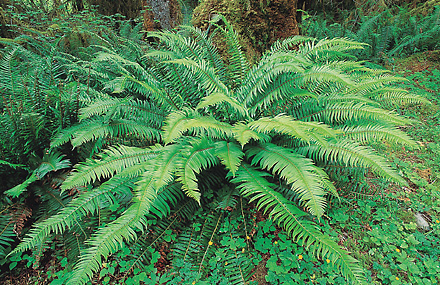Fern is a type of green, nonflowering plant that grows in most parts of the world. Ferns vary widely in size and form. Some ferns look like mosses and measure about 1 inch (2.5 centimeters) in length. Others resemble palm trees and grow more than 65 feet (20 meters) tall. Ferns have some of the most beautiful and varied leaves among all plants. The leaves of many ferns are long and lacy and consist of hundreds of tiny leaflets. Other ferns have simple, rounded leaves. The leaves of the mosquito fern measure only about 1/10 inch (2 millimeters) long. There are thousands of species (kinds) of ferns.
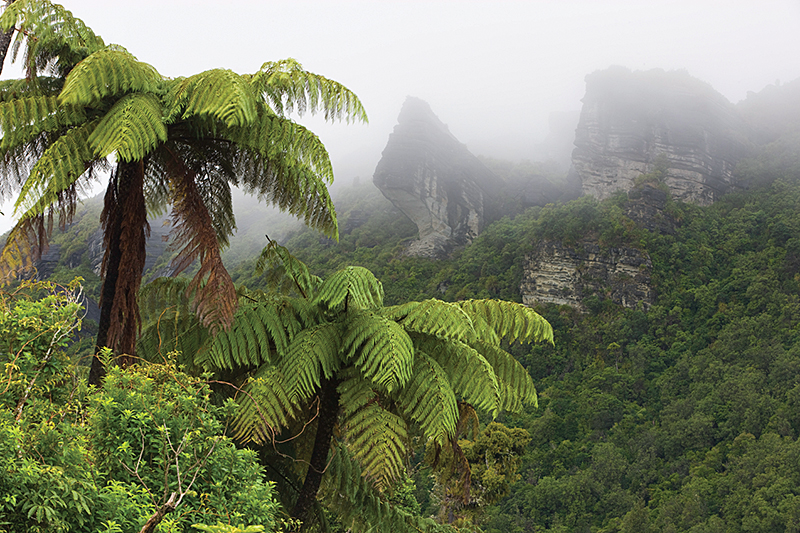
Ferns can be found in all parts of the world except the driest deserts and coldest regions. However, most ferns live in tropical regions. Ferns typically grow in damp, shady areas. In the tropics, many ferns grow on the trunks and branches of trees. In milder climates, ferns may be found growing along streams in woods and in the cracks and overhangs of rock cliffs.
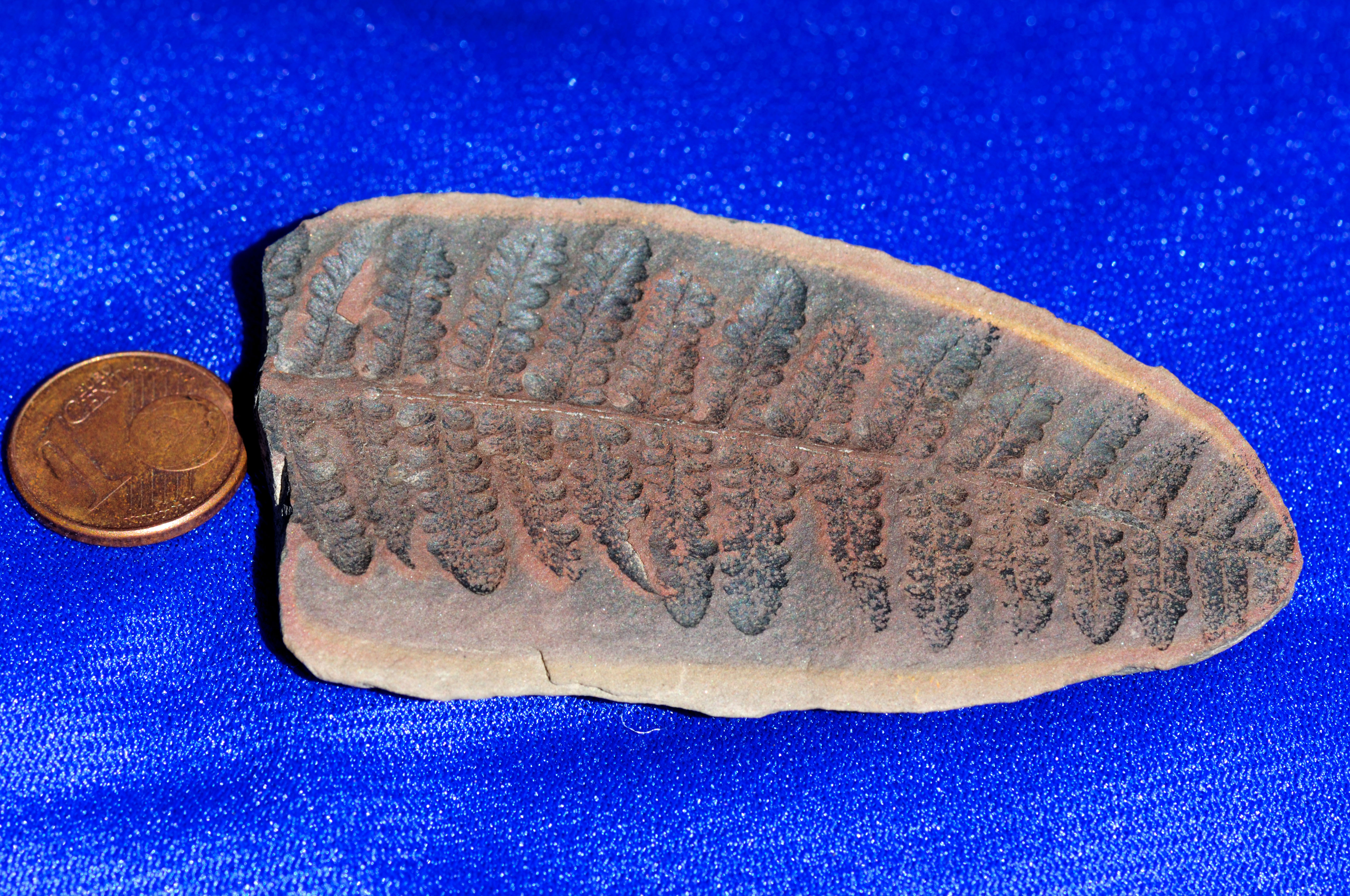
Ferns rank among the oldest types of plants that live on land. Scientists believe that ferns first appeared from 350 million to 400 million years ago. Like mosses and other nonseed plants, ferns reproduce by releasing tiny, thick-walled cells called spores. Ferns do not produce flowers or seeds.
People enjoy ferns mainly for their beauty. Ferns are grown in many gardens, especially as background in shady areas. Several ferns are popular as house plants.
Parts of a fern.
Ferns have well-developed stems, roots, and leaves. The stem of a fern stores food that the plant needs to grow. As long as the stem is alive, the fern will continue to grow and make new leaves and roots. The stem may grow upright above the ground, horizontally along the ground, or even underground. The stems of ferns often form branches. A large clump of ferns forms if a stem branches many times. Fern stems usually grow slowly and may live for 100 years or more.
The roots also may live a long time. They anchor the stem to the ground and absorb water and nutrients.
Unlike the stem and roots, the leaves of a fern usually live only one or two years. A new set of leaves grows from the tip of the stem every year. A young fern leaf is coiled like the top of a violin and is called a fiddlehead. It uncurls as it grows. The leaf is attached to the stem by a stalk called the stipe. The fern leaf is often called a frond.
Fern leaves make food for the plant through photosynthesis (see Photosynthesis). Many fern leaves also carry the sporangia, the tiny structures that produce spores. These structures have a stalk and a capsule filled with spores. Sporangia are typically found in clusters on the underside of fern leaves. Each cluster of sporangia is called a sorus, and all the clusters on a fern are the sori. Ferns are the only plants that have sori. Biologists identify and classify ferns based in part on how the sori are arranged. Also important is the presence of the indusium, a structure that covers and protects the sorus.
Life cycle of a fern.
Ferns grow and reproduce in two stages—sexual and asexual. Each stage has its own unique form. This kind of life cycle is called alternation of generations.
During the asexual stage, the fern is called a sporophyte. The sporophyte produces spores. It is the form commonly recognized as a fern. A sporophyte may produce millions of spores. But only some of the spores land in places suitable for growth. A fern spore develops into a small, heart-shaped plant called a gametophyte.
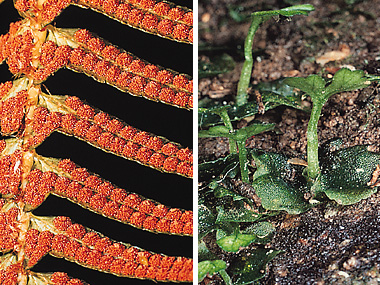
The growth of the gametophyte begins the sexual stage of the fern’s life cycle. The gametophyte produces gametes, the male and female sex cells known as sperm and eggs. Fern gametophytes are usually called prothallia. After a few weeks, prothallia develop sex organs. Male sex organs are called antheridia. Female sex organs are called archegonia. In most ferns, antheridia and archegonia are produced on separate prothallia. When the sperm are mature and the prothallia are wet, the antheridia split open and the sperm swim out. The sperm usually swim into the archegonia of other prothallia. A sperm that reaches an egg joins with it to form a single cell, called a zygote.
The zygote grows into a mass of cells called an embryo. Part of the embryo absorbs food from the prothallium. Other parts develop into the first leaf, the first root, and the stem of a new sporophyte. The embryo draws its energy from the prothallium until the root enters the soil and the sporophyte can live on its own. At this point, the prothallium shrivels and dies.
Kinds of ferns.
Thousands of fern species grow around the world. Among the best known are (1) bracken, (2) the royal fern, and (3) the Western sword fern.
Bracken is one of the most common ferns worldwide. It has large, triangular fronds that grow from a cordlike underground rhizome. Its sori occur along the edges of the frond, protected by the rolled edge of the leaf. Bracken lives in open areas, especially along roadside woodlands and in abandoned fields. People consider it a nuisance in pastures because it can poison livestock. Bracken is hard to get rid of because its rhizome reaches deep underground.
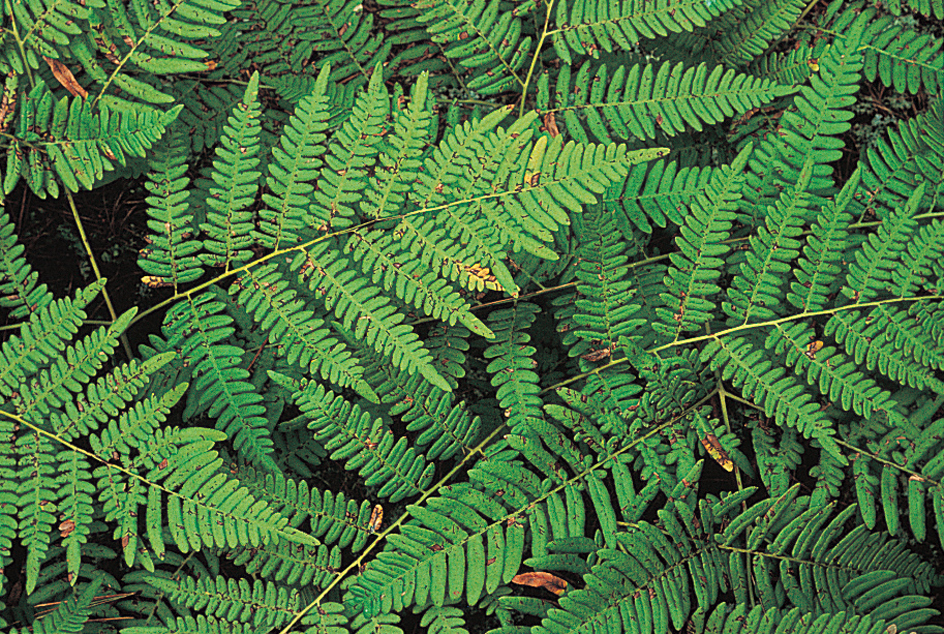
The royal fern is a particularly beautiful species found in swampy forests of Asia, Europe, and eastern North America. It has a short, thick stem, with many fronds growing around the top of the stem like a basket. The fronds may grow up to 6 feet (2 meters) long and are divided into many narrow leaflets. The spore-producing part of this fern is at the tip of the frond.
The Western sword fern grows in forests of the North American Pacific Coast. Its sori are round and protected by circular indusia. Like the royal fern, the Western sword fern has fronds that grow in a circle from a short stem. Each year’s fronds last until late in the following season. As a result, this fern is green throughout the year. Florists use the Western sword fern as greenery because fronds cut from it last a long time in cold storage.
